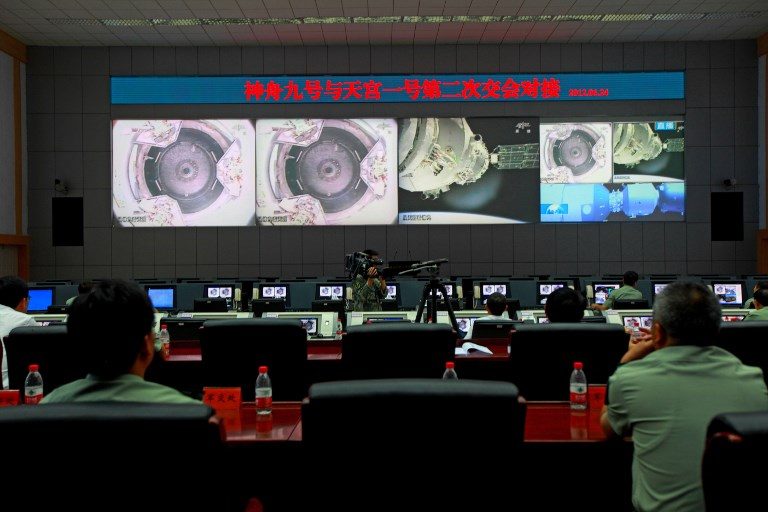SUMMARY
This is AI generated summarization, which may have errors. For context, always refer to the full article.

BEIJING, China – Shortly after the Tiangong-1 space station re-entered Earth’s atmosphere on Monday, April 2 most of it was vaporised, Chinese space officials said, with the remnants expected to have plopped harmlessly somewhere into the Pacific Ocean.
The defunct space lab joins a long list of craft that have burned up as they have hurtled back to Earth.
Here are the some of the more famous ones:
Mir – 2001
Launched in 1986, the Mir station was once a proud symbol of Soviet success in space, despite a series of high-profile accidents and technical problems.
But Russian authorities, strapped for cash after the collapse of the Soviet Union, chose to abandon the orbiting outpost in the late 1990s and devote their resources to the International Space Station.
The massive 140-ton station was brought down by the Russian space agency over the Pacific Ocean between New Zealand and Chile, and its burning debris was seen streaking across the sky over Fiji.
Salyut 7 – 1991
Salyut 7, launched in 1982, was the last orbiting laboratory under the Soviet Union’s Salyut program.
When the Mir space station was launched in 1986, Soviet space authorities boosted Salyut 7 to a higher orbit and abandoned it there.
It was supposed to stay in orbit until 1994, but an unexpected increase in drag by the earth’s atmosphere caused it to hurtle down in 1991.
The 40-ton station broke up on re-entry and the parts that survived scattered over Argentina.
Skylab – 1979
Skylab was the first American space station, launched by NASA in 1973, and was crewed until 1974.
There were proposals to refurbish it later in the decade, but the lab’s orbit began to decay and NASA had to prepare for its re-entry into the Earth’s atmosphere with only partial control over where it would come down.
The 85-ton Skylab’s eventual descent over Australia was a worldwide media event, with some newspapers offering thousands of dollars to people who recovered parts of the station that landed.
Columbia – 2003
The disintegration of large spacecraft has not always been without tragedy.
In 2003, NASA’s space shuttle Columbia broke apart during its re-entry into the atmosphere at the end of the STS-107 mission, killing all seven astronauts on board.
Columbia’s left wing was damaged by a piece of debris during launch, leaving the shuttle unable to withstand the extreme temperatures generated by re-entry, and causing it to break apart.
The flaming debris from the 80-ton craft was caught streaking across the sky over the southern US by local TV stations, with tens of thousands of the doomed shuttle’s parts scattered over Texas and Louisiana. – Rappler.com
Add a comment
How does this make you feel?





There are no comments yet. Add your comment to start the conversation.